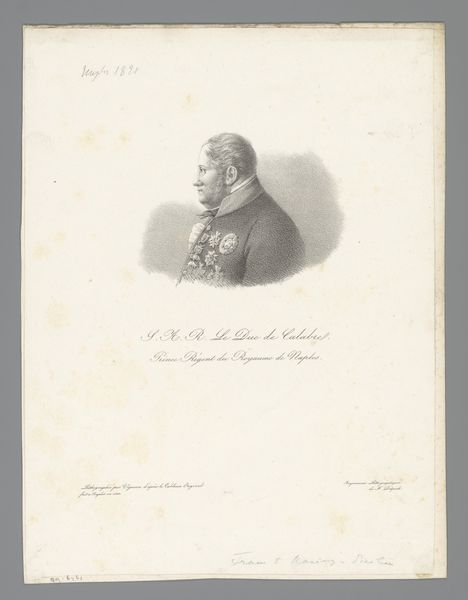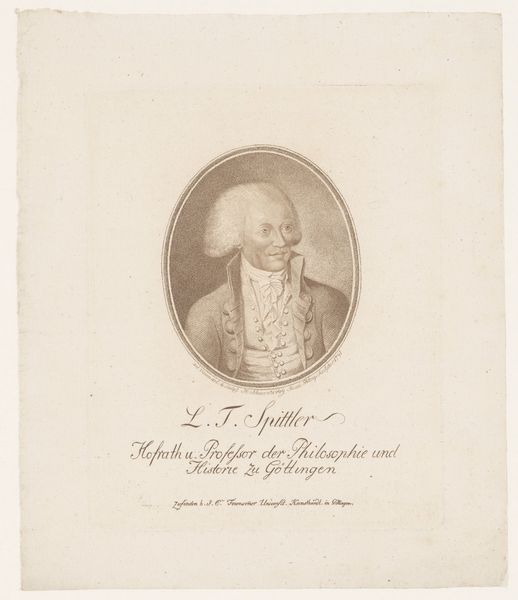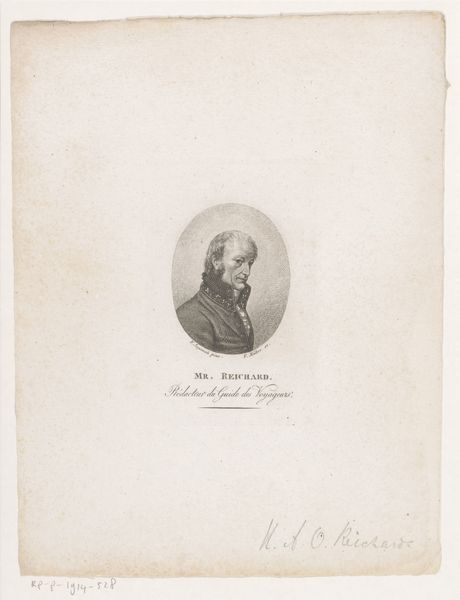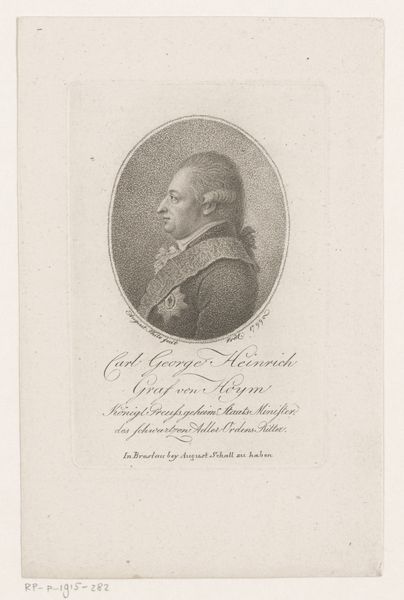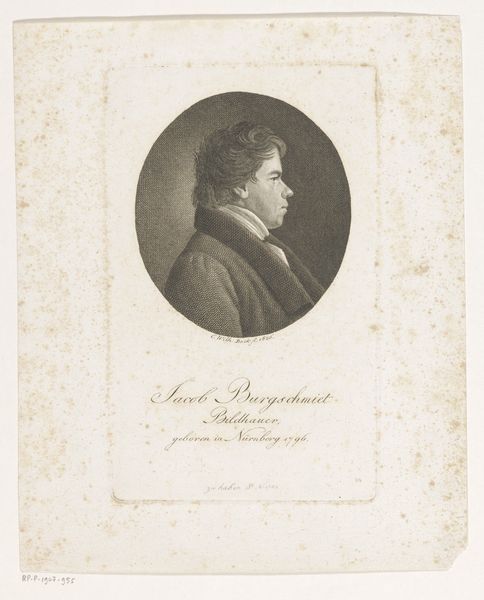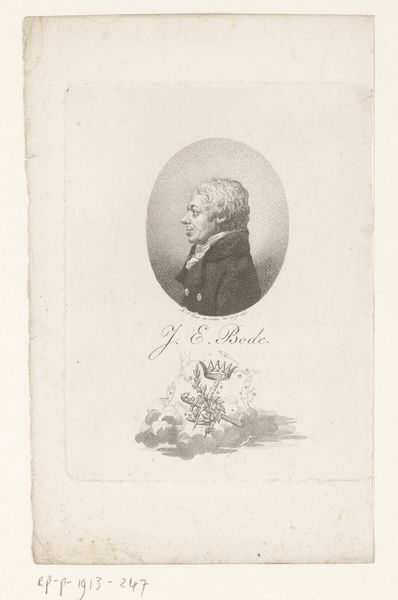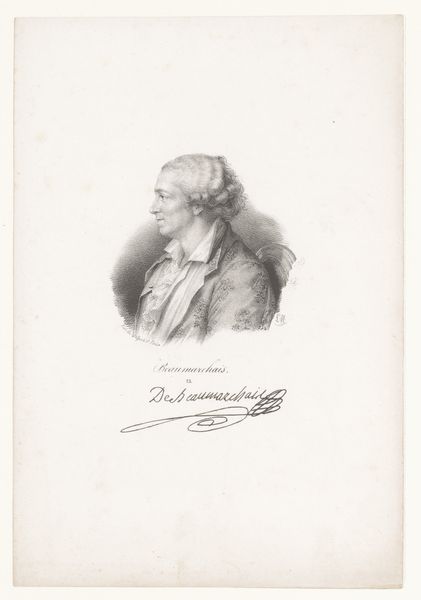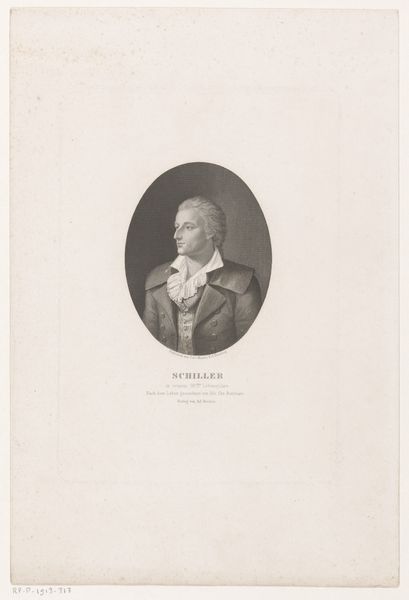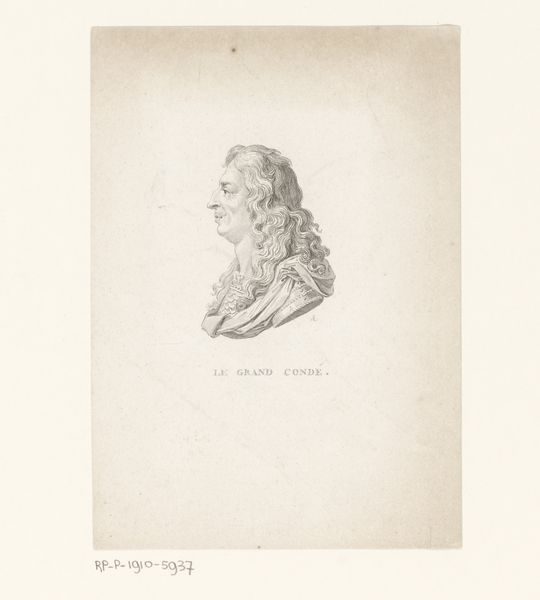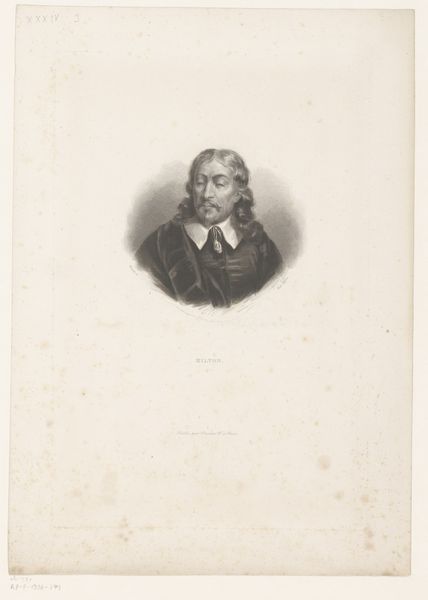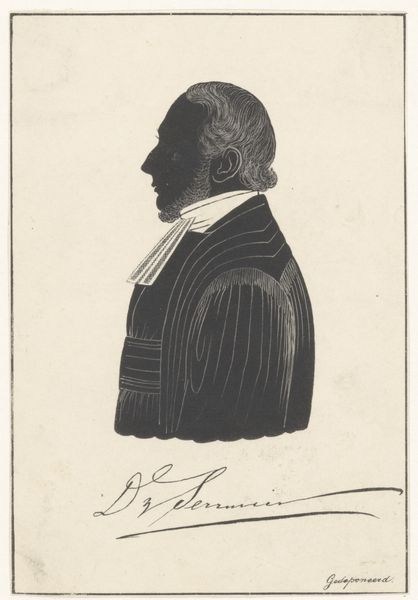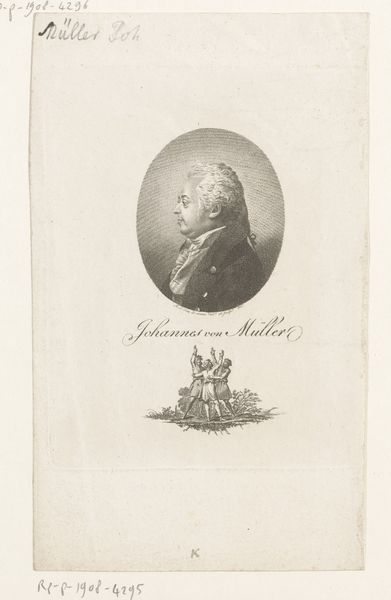
drawing, etching, pencil, graphite
#
portrait
#
drawing
#
neoclacissism
#
etching
#
pencil sketch
#
etching
#
pencil
#
graphite
#
pencil work
#
academic-art
Dimensions: height 232 mm, width 171 mm
Copyright: Rijks Museum: Open Domain
André Dutertre made this portrait of Claude-Louis Berthollet using the technique of etching, a printmaking process where lines are incised into a metal plate with acid. Dutertre would have coated a copper plate with a waxy, acid-resistant substance, then scratched through this coating with a sharp needle to expose the metal. Immersing the plate in acid would then bite away the exposed lines. The depth of the lines, and therefore the darkness of the printed line, is controlled by the amount of time the plate spends in the acid bath. The plate is then inked, wiped, and pressed onto paper, transferring the image. The appeal of etching lay in its relative ease and the fineness of line that could be achieved, visible here in the details of Berthollet’s hair and clothing. Compared to engraving, which requires considerable strength and skill to cut lines directly into the metal, etching allowed for a more fluid, drawing-like approach. The printmaking process meant that multiple identical images could be made. Consider that this detailed portrait was made possible by the chemical action of acid on metal. In this way, Dutertre’s detailed print encapsulates a moment of transition, capturing the image of an important chemist through the industrial processes of printmaking.
Comments
No comments
Be the first to comment and join the conversation on the ultimate creative platform.
